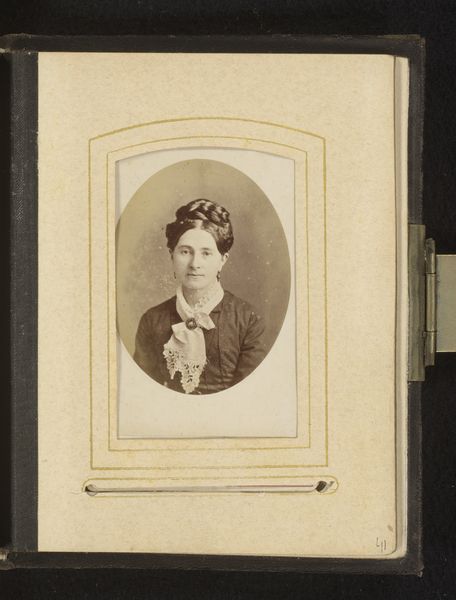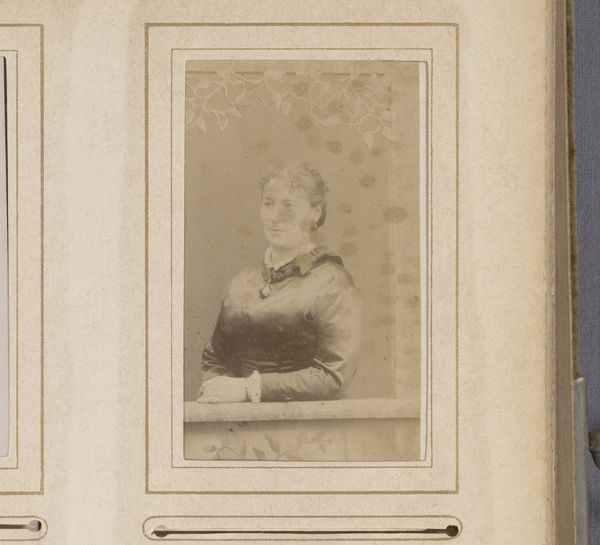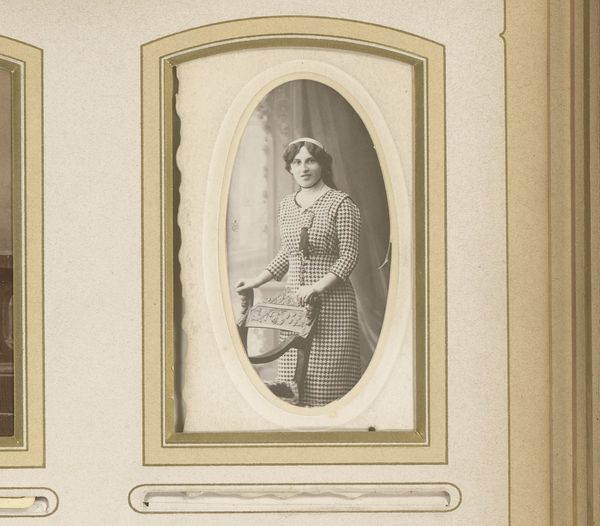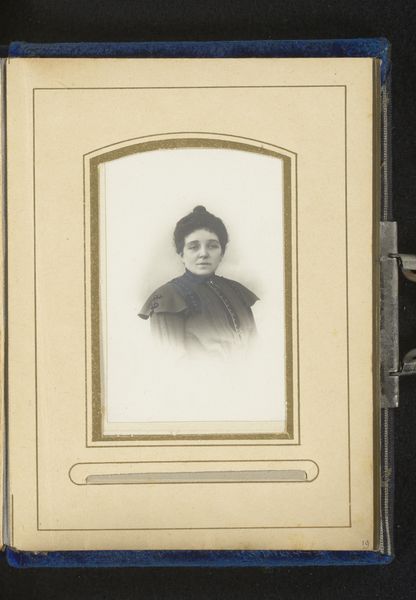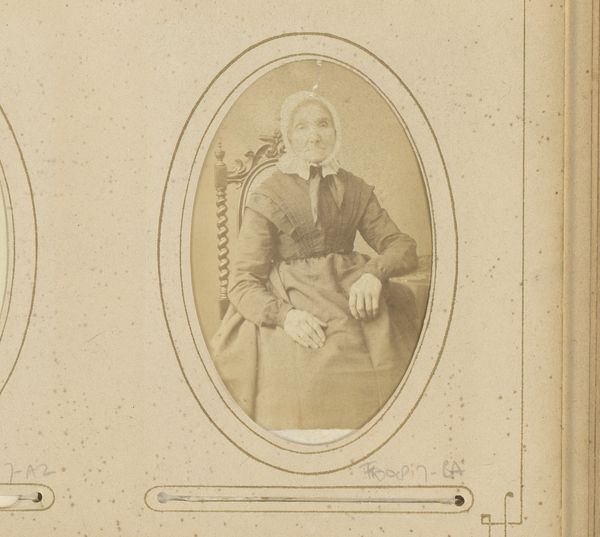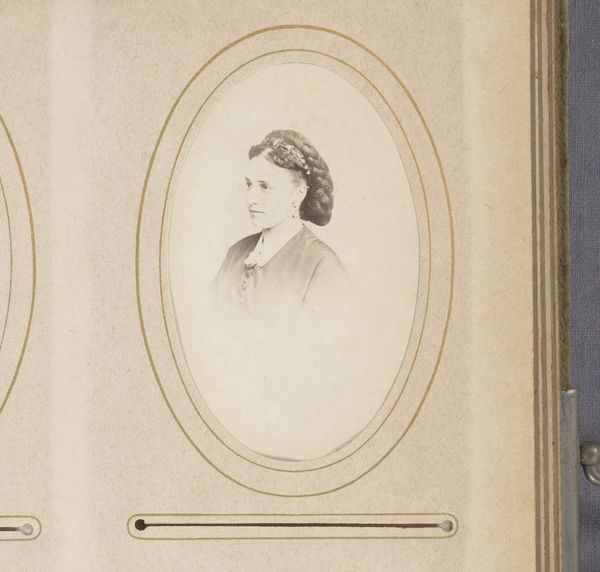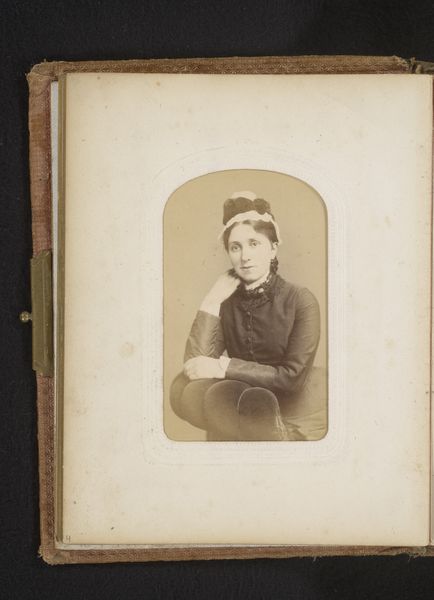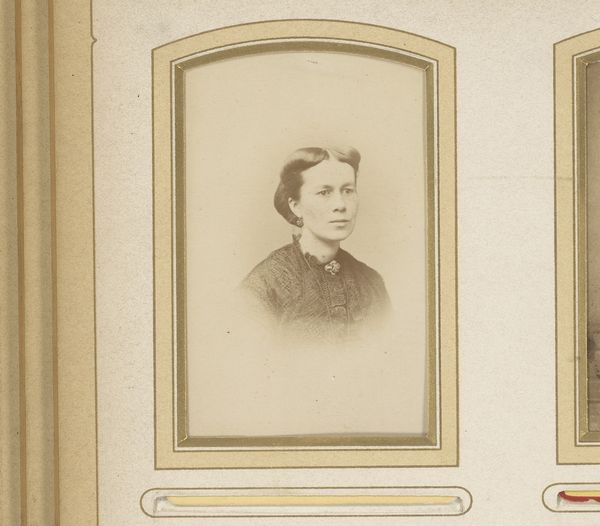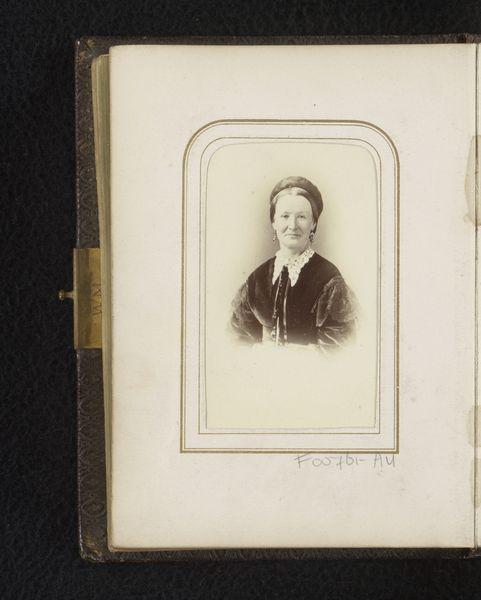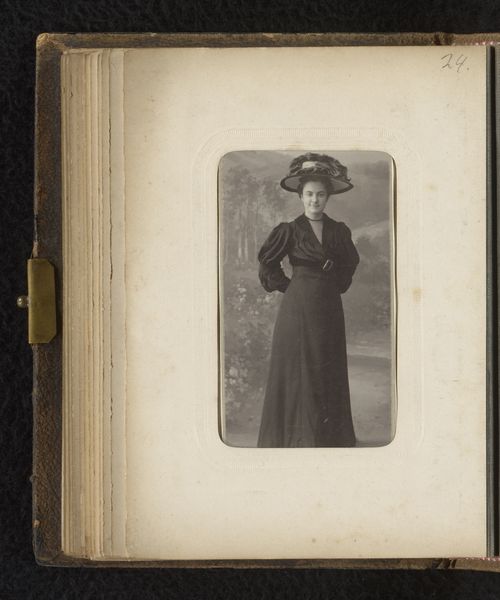
Portret van een jonge vrouw met hoed, leunend op een zuil 1880 - 1905
0:00
0:00
photography
#
portrait
#
aged paper
#
toned paper
#
16_19th-century
#
vintage
#
photo restoration
#
photography
#
historical photography
#
yellow element
#
19th century
Dimensions: height 82 mm, width 53 mm
Copyright: Rijks Museum: Open Domain
Curator: This is an interesting albumen print, likely dating from between 1880 and 1905. The Rijksmuseum attributes it to Herman Salzwedel. It’s titled, "Portret van een jonge vrouw met hoed, leunend op een zuil." Editor: It’s undeniably atmospheric! I'm struck by the way the image has aged, giving it a yellowed, vintage appearance. It feels delicate, almost like a fragment of a bygone era. Curator: That yellowing is a direct result of the aging of the albumen, the egg white emulsion used to bind the photographic chemicals to the paper. You can see how the process itself is implicated in its current appearance, literally shaping our experience of viewing it. Editor: Absolutely. And the pose! She is resting on a column; I see books, not a pillar, so probably this is referring to the symbolism of supporting structures rather than the real thing. The entire composition seems designed to convey status, maybe education and certainly societal role. Was Salzwedel photographing an archetype more than an individual? Curator: Possibly both. Looking at the production of portraiture at the time reveals so much about class and representation. Photos like this became newly accessible but remained inherently performative. Who was having their portrait done, and why? What labor went into her clothing, the staging, and ultimately, the circulation of this image? These portraits become artifacts of social mobility. Editor: It also begs the question of how institutions shape value. Today it hangs in the Rijksmuseum. How has its meaning changed as it has moved from the hands of the sitter and Salzwedel to the archive? And more, how do these photos allow or constrain ideas about identity and representation today? Curator: Exactly. Considering its trajectory contextualizes the image, not only within the history of photography but within social history. It's easy to be drawn in by its aesthetic qualities, but essential to reflect on what made its production, preservation, and eventual display possible. Editor: A good reminder. What begins as a glimpse into the past transforms into an investigation of cultural processes that shape not only art but life itself. Curator: Precisely. Hopefully our conversation sparks interest in what's seen, but also what isn't.
Comments
No comments
Be the first to comment and join the conversation on the ultimate creative platform.
